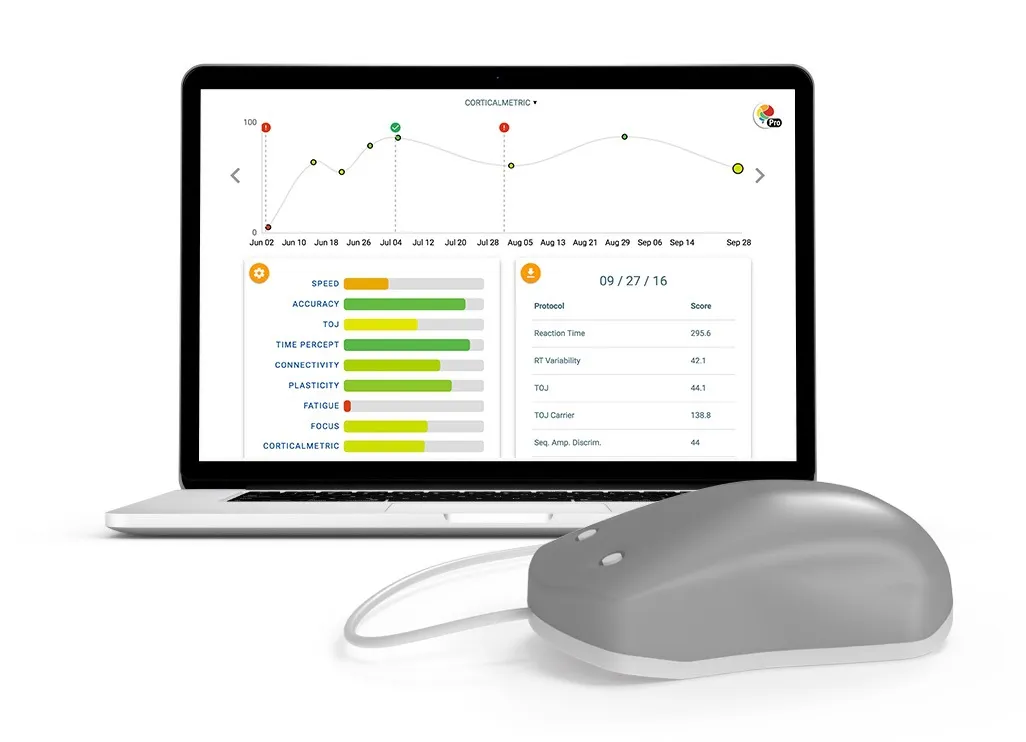The Brain Gauge is a cognitive assessment tool that uses touch-based sensory testing to measure your brain health. It’s the quickest and most accurate way to track improvements to your mental fitness.
Our tests let you measure 8 essential components of brain health: Speed, Focus, Fatigue, Accuracy, Sequencing, Timing Perception, Plasticity, and Connectivity. You’ll also get a comprehensive mental fitness score that we call your corticalmetric.
How does Brain Gauge work?
During each test, those two orange tips will ‘buzz’ your fingers in a specific way. Our free app will ask questions about what you felt, and then analyze your responses using clinically-proven neuroscience. In less than 15 minutes you can complete a comprehensive brain test and measure your mental fitness in less than 15 minutes.
It is possible to moniter changes in your scores over time and learn how diet, supplements, and lifestyle affect your brain’s performance.
The somatosensory system is well suited for testing the central nervous system (CNS) because it is organized so that adjacent regions on the skin project to adjacent cortical regions. Tactile stimuli can be precisely controlled and delivered to these regions and it is easy to control for distractions (as compared to controlling for distracting visual or auditory input). More than 50 years of neuroscience research have yielded a great deal of information about the nature of the interactions within and between the adjacent cortical regions as they are activated by tactile stimuli. This includes three decades of our own work, which has helped to build the foundation for understanding certain aspects of brain function and how to test for it.
While medical imaging is a useful tool for identifying whether relatively large areas of the brain are injured, cortical metrics are very good at identifying subtle changes in brain function. For example, the sedative that many people are given to reduce anxiety before being scanned would have a significant impact on cortical metrics but no impact on the medical image.
One of the underlying principles of the science behind the Brain Gauge is that the nerves in adjacent fingertips project to specific and unique adjacent regions in the brain. The Brain Gauge sends gentle vibrations to your fingertips to precisely activate these nerves and areas in the brain. When adjacent regions are activated, they interact with each other in predictable patterns that affect your perception of how the vibrations feel. By changing the vibrations in specific ways and then asking questions about what you feel, we can measure the percept created by the interactions and predict how well the mechanisms behind these interactions are working.
This unique technology keeps tabs on conditions like Alzheimer’s, Chronic Pain, Concussion, Autism, Neuro Development, ADHD, Substance Abuse, Migraines, Aging and performance–and offers an objective measure on how your brain responds to new treatments or medications.
These methods have been validated by over 50 years of clinical studies and has been used at more than 50 universities around the world.
For more information, www.corticalmetrics.com.

